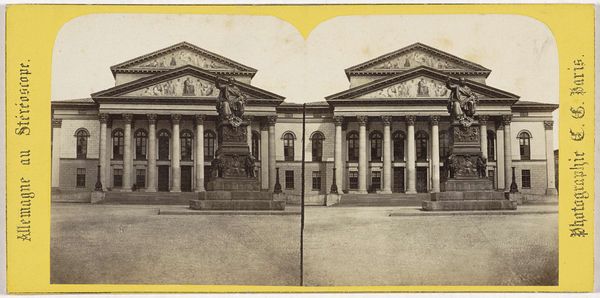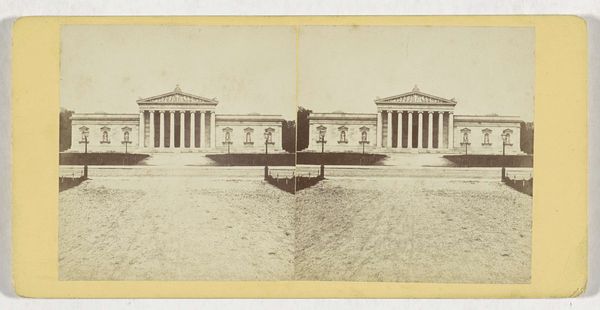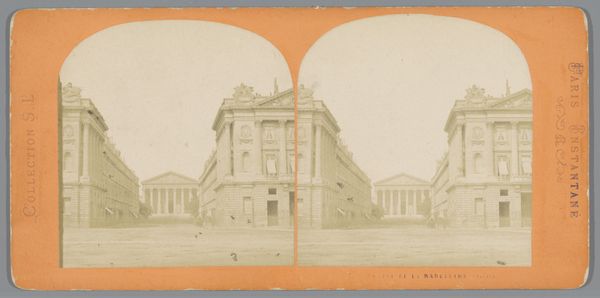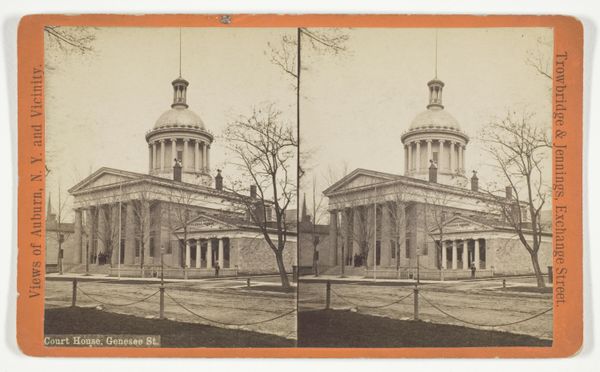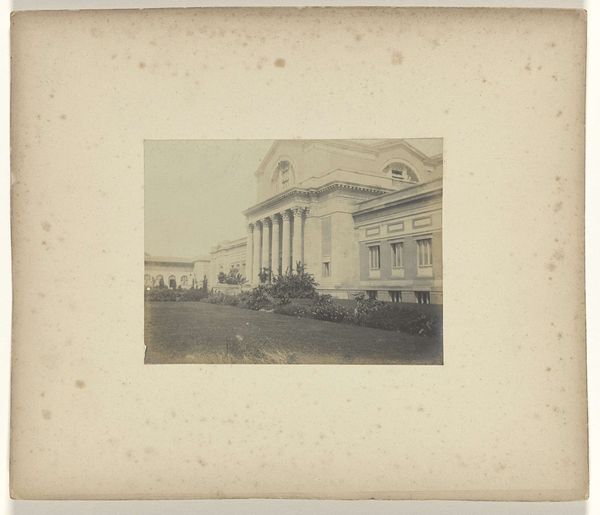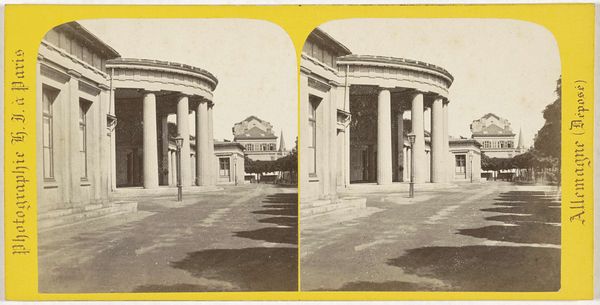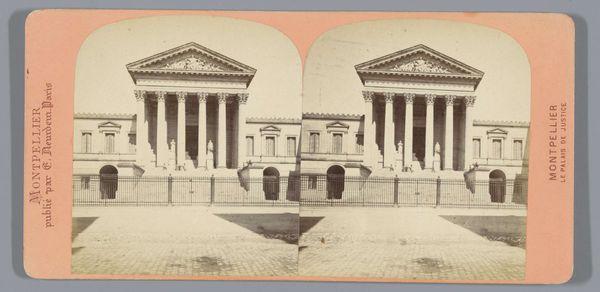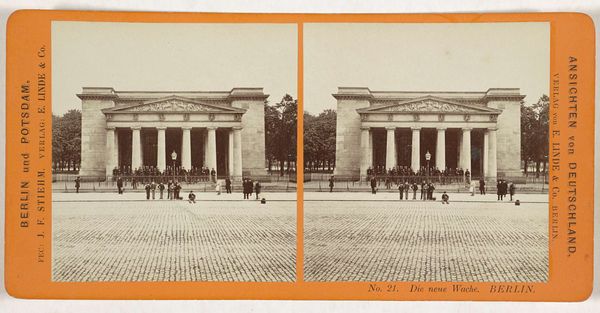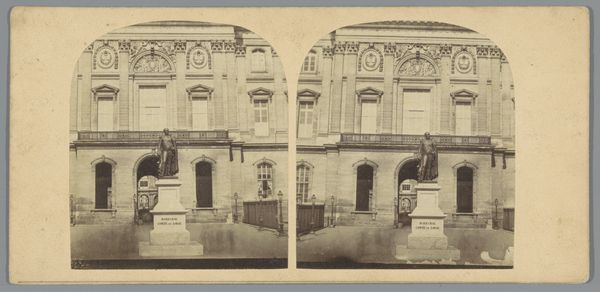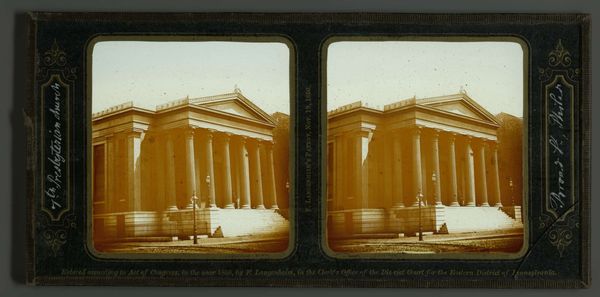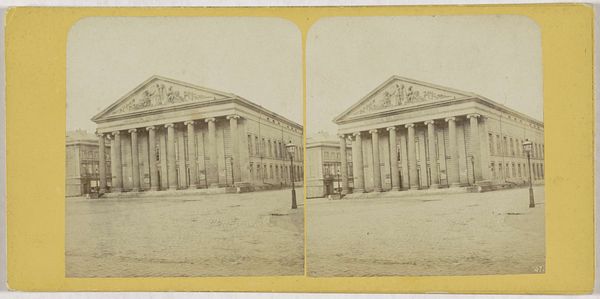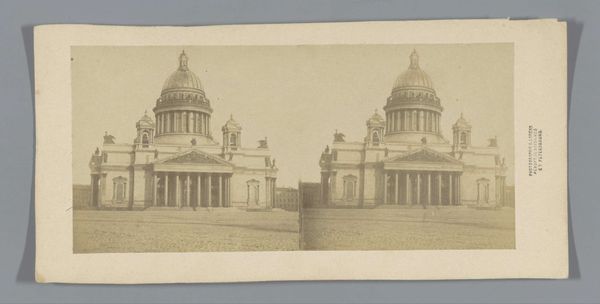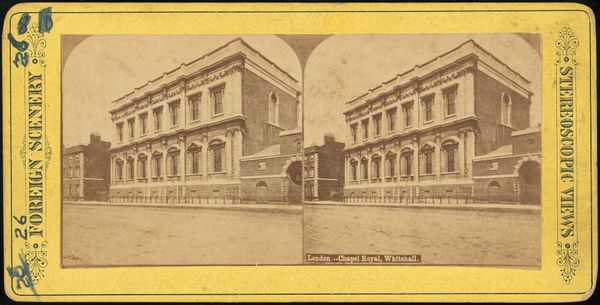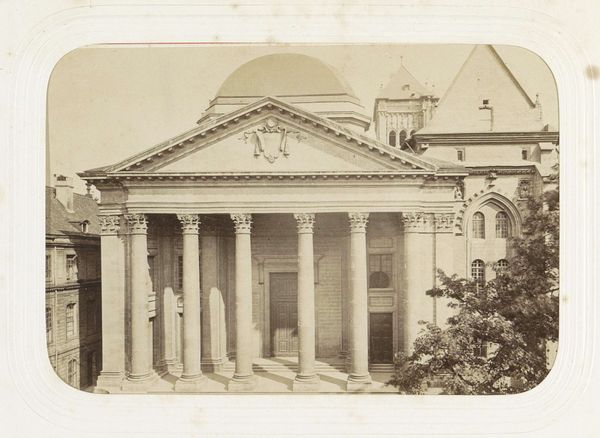
Dimensions: height 65 mm, width 141 mm, height 86 mm, width 175 mm
Copyright: Rijks Museum: Open Domain
Curator: It strikes me as a testament to order, a serene, almost mathematically perfect rendition of a monumental structure. Editor: And it is—let’s introduce this striking photograph. This gelatin-silver print captures the Église Saint-Vincent-de-Paul in Paris, dating roughly from 1850 to 1880, attributed to a photographer known only as "LF." What are your initial thoughts on the piece beyond this initial impression? Curator: Well, the clarity is incredible. Look at the way the light falls across the neoclassical facade, emphasizing the verticality of the columns and the austere geometry. Editor: The production process itself, particularly with early photography, played such a pivotal role. It really showcases the social impact that photography began to have and demonstrates advances in the medium. Each print like this offered visual records available on a wider scale, think of the working class tourist or civic planners—what possibilities! Curator: That's certainly interesting, but consider how the architectural features serve specific aesthetic functions. The symmetry is paramount—notice how your eye is drawn immediately to the center, anchored by those imposing twin towers. Editor: Agreed! However, those neoclassical architectural details also point to a fascinating story of Parisian rebuilding, urbanization, and the social engineering that Baron Haussmann later undertook. The availability of this photographic printing created a culture around that. Curator: I do appreciate how the limited tonal range of the gelatin-silver print emphasizes the contrasts, rendering the building almost sculptural. The deliberate staging also removes practically any living soul from the image. Do you think there is any intended irony or counterpoint there? Editor: That is fascinating, considering how often public images and the arts would feature those exact populations for the consumption of this technology and in this location. The photograph provides this stark view during an era of considerable economic and technological advancement, all achieved through immense labor. Curator: I’ll concede that the photograph captures an interesting moment in material production but I'm fixated by the pure aesthetic form displayed. That temple front, in photographic form, achieves a lasting image of perfection, divorced from practical realities. Editor: I find it compelling how this intersection of technology, labor, architecture, and art history are displayed. Curator: Ultimately, the photograph remains as a reminder that the principles of ideal structure and aesthetic execution, have their value too. Editor: Leaving us, once more, with important observations about a cultural era that was quickly accelerating towards industrial advancement, artistic application, and commodification.
Comments
No comments
Be the first to comment and join the conversation on the ultimate creative platform.
